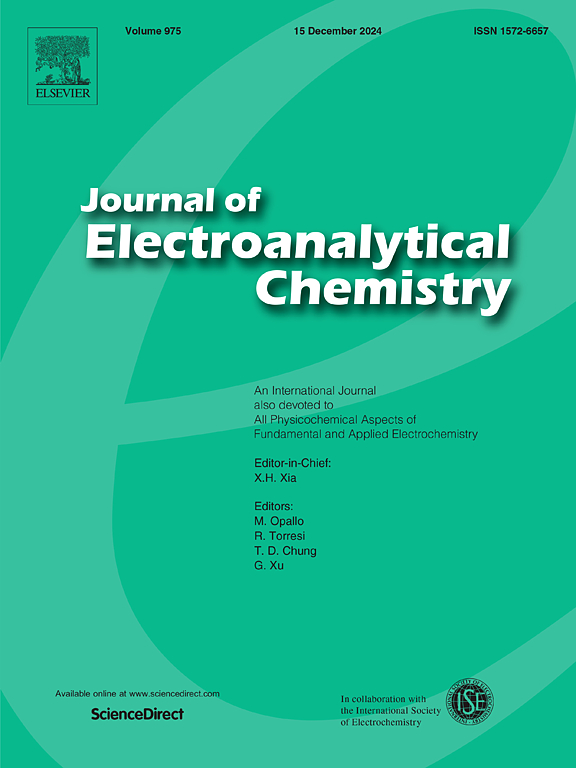Unveiling the characteristic EIS fingerprint of the ion-transfer process in air electrodes for solid oxide cells
IF 4.1
3区 化学
Q1 CHEMISTRY, ANALYTICAL
引用次数: 0
Abstract
The development of high-performing electrodes for the new generation of solid oxide cells requires in-depth understanding of the physical processes that lie behind their resistive contributions. The performance limitation provided by the ion-transfer step scales with the properties of the electrode-electrolyte heterointerface and must be optimized to increase the cells durability. During long-term testing, the electrode dynamic response can be affected by the increased limitation of the ion-transfer step due to the delamination of the electrode from the electrolyte or the generation of secondary phases. In this study, a 1-D physics-based model is used to unravel the characteristic fingerprint of the ion-transfer process in impedance spectra. The model reproduces the qualitative dynamic behavior of LSCF and LSCF-CGO air electrodes and perform sensitivity analyses to elucidate the role played by the electrode-electrolyte adherence and the governing kinetic regime. The effect provided by a parallel reaction pathway and its identifiability in experimental data were also investigated. The obtained simulations highlight that the ion-transfer resistive peak can emerge in the 104–106 Hz range, depending on the electrode kinetics and surface properties. Furthermore, in experimental data, its characteristic contribution can be masked by the wires inductance and result as a higher ohmic resistance.

揭示固体氧化物电池空气电极离子转移过程的特征EIS指纹图谱
为新一代固体氧化物电池开发高性能电极需要深入了解其电阻贡献背后的物理过程。离子转移步骤提供的性能限制与电极-电解质异质界面的特性成比例关系,因此必须对其进行优化,以提高电池的耐用性。在长期测试过程中,由于电极与电解质分层或产生次生相,离子转移步骤的限制会增加,从而影响电极的动态响应。本研究采用基于物理的一维模型来揭示阻抗谱中离子转移过程的特征。该模型再现了 LSCF 和 LSCF-CGO 空气电极的定性动态行为,并进行了敏感性分析,以阐明电极-电解质附着所起的作用以及动力学机制。此外,还研究了平行反应途径的影响及其在实验数据中的可识别性。模拟结果表明,离子转移电阻峰可出现在 104-106 Hz 范围内,具体取决于电极动力学和表面特性。此外,在实验数据中,其特征贡献可能会被导线电感所掩盖,从而导致较高的欧姆电阻。
本文章由计算机程序翻译,如有差异,请以英文原文为准。
求助全文
约1分钟内获得全文
求助全文
来源期刊
CiteScore
7.80
自引率
6.70%
发文量
912
审稿时长
2.4 months
期刊介绍:
The Journal of Electroanalytical Chemistry is the foremost international journal devoted to the interdisciplinary subject of electrochemistry in all its aspects, theoretical as well as applied.
Electrochemistry is a wide ranging area that is in a state of continuous evolution. Rather than compiling a long list of topics covered by the Journal, the editors would like to draw particular attention to the key issues of novelty, topicality and quality. Papers should present new and interesting electrochemical science in a way that is accessible to the reader. The presentation and discussion should be at a level that is consistent with the international status of the Journal. Reports describing the application of well-established techniques to problems that are essentially technical will not be accepted. Similarly, papers that report observations but fail to provide adequate interpretation will be rejected by the Editors. Papers dealing with technical electrochemistry should be submitted to other specialist journals unless the authors can show that their work provides substantially new insights into electrochemical processes.

 求助内容:
求助内容: 应助结果提醒方式:
应助结果提醒方式:


